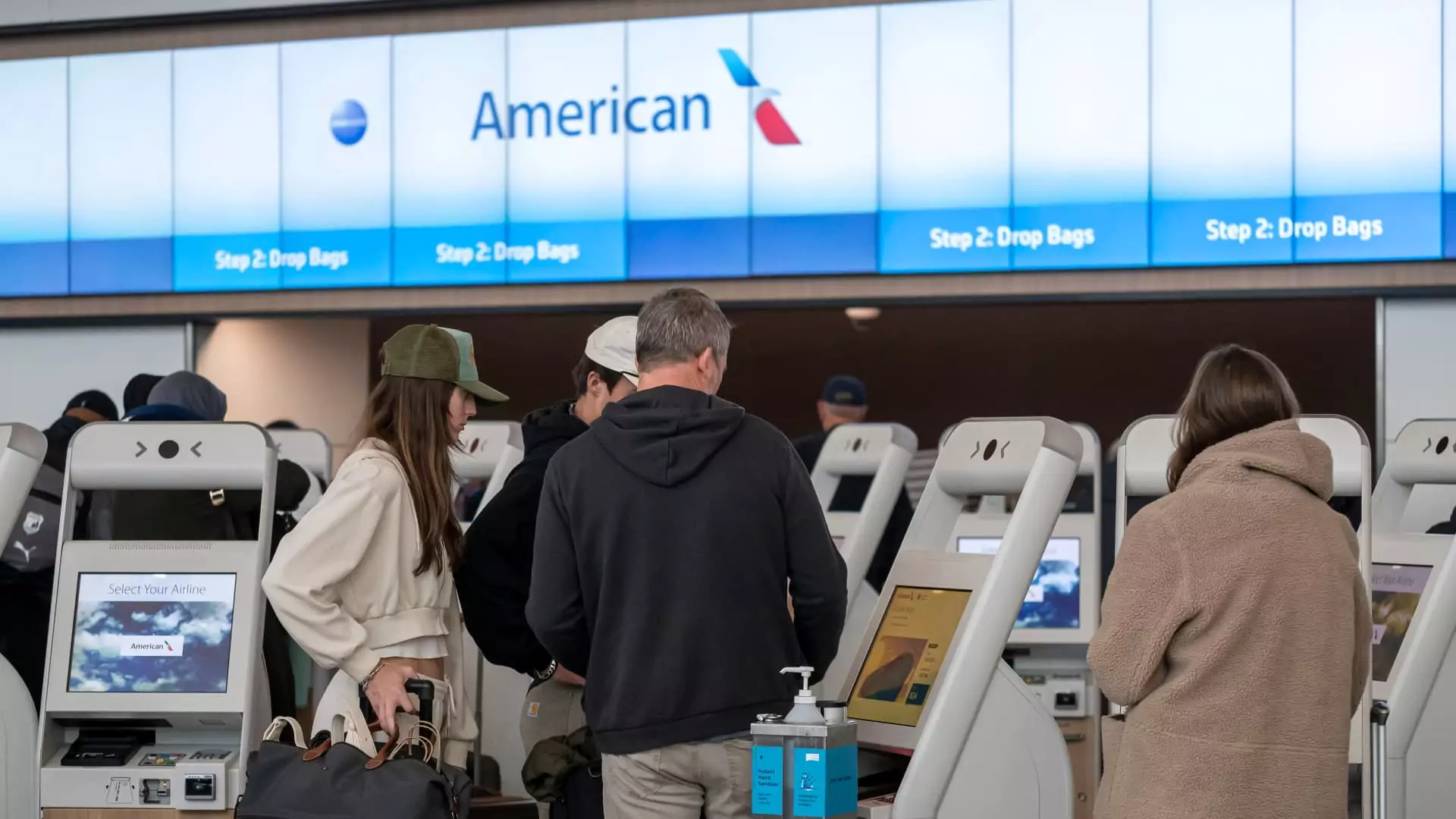As trading progresses through the midday phase, several companies are making headlines for both positive and negative reasons. From unfortunate accidents to disappointing earnings forecasts, the stock market is responding dynamically to various corporate developments. This article will delve into the latest trajectories of selected companies, analyzing their performances and the underlying factors driving these movements.
American Airlines is currently facing turbulent times following a tragic collision between one of its regional jets and an Army helicopter in Washington, D.C. This incident represents a significant moment in aviation safety, marking the first fatal commercial airline crash on American soil since 2009. In the aftermath, the airline’s stock experienced a drop of 2.5%, reflecting investors’ concerns about the implications of the accident on the company’s reputation and operational protocols. Such events not only affect immediate financial metrics but can also cast long-term shadows over a firm’s market position and trust with the public.
Nvidia, a leading figure in the semiconductor industry, saw its shares retreat by over 3% as it struggled with ongoing selling pressure amidst a volatile trading week. The stock has plummeted by more than 16% so far, with investors reacting to a combination of market speculation and broader economic concerns. Nvidia’s heavy reliance on the cyclical semiconductor market renders it particularly vulnerable during downturns, and this week’s performance underscores the challenges the company faces in maintaining its valuation amidst fluctuating investor sentiment.
United Parcel Service (UPS) faced a staggering 16% decrease in its share value, triggered by an unexpected announcement regarding its agreement with Amazon. The shipping giant disclosed plans to reduce its volume with the e-commerce behemoth by over 50% by 2026. Given that Amazon is UPS’s largest customer, this significant cut in volume raises questions about future revenue streams and their strategic partnership. The market’s reaction appears to indicate a high degree of panic, as investors recalibrate their expectations of UPS’s financial performance in light of this substantial contract reduction.
In stark contrast, Las Vegas Sands showcased a robust performance with a gain exceeding 10%. This upward movement can be attributed to the company’s impressive fourth-quarter revenue, which reached $2.9 billion—surpassing analysts’ expectations of $2.87 billion. The positive sentiment surrounding Las Vegas Sands reflects not only its strong operational outcomes but also renewed interest in the hospitality and leisure sectors post-pandemic as tourism gradually recovers.
While some companies soared, others encountered turbulence, particularly ServiceNow, which saw its stock fall by over 12%. The software solutions provider issued weak guidance for its first-quarter revenue, estimating figures slightly below market expectations (between $2.995 billion and $3 billion against a consensus of $3.03 billion). This forecast disappointment could raise red flags for investors concerned about the company’s growth trajectory and current market dynamics.
On a more positive note, International Business Machines (IBM) reported solid fourth-quarter results that buoyed share prices by 12%. Reporting a profit of $3.92 per share—better than analyst predictions—IBM also matched expectations with revenue of $17.55 billion. These results are a testament to the company’s adaptability and strategic developments, suggesting a potential resurgence, particularly in a rapidly changing tech landscape.
The industrial equipment manufacturer Caterpillar experienced a drop of 4.8% following fourth-quarter revenue metrics that fell short of expectations, despite surpassing earnings per share forecasts. Meanwhile, Teradyne faced a 6.5% dip amid mixed guidance figures for the upcoming quarter. These mixed outcomes highlight the critical view investors are taking towards operational performance in the current economic climate, underlining the importance of meeting or exceeding forecasts.
In the realm of telecommunications and healthcare, Comcast reported a discouraging net loss of 139,000 residential broadband subscribers, leading to a 12% decline in its stock. Such subscriber losses can have long-lasting ramifications for revenue stability. Cigna also saw a fall of 8% due to unmet earnings expectations. Despite reporting strong revenue figures, the adjusted earnings per share fell short of analyst targets, revealing investor sensitivity to performance metrics in highly competitive industries.
The midday trading session reveals a complex tapestry of market reactions as companies navigate a blend of operational challenges and opportunities. From tragic incidents impacting American Airlines to the positive revenue patterns seen in Las Vegas Sands, the divergent paths of these companies serve as reminders of the numerous factors that influence stock performance. Investors must remain vigilant as they assess not only financial metrics but also broader market trends and sentiment to make informed decisions in such a capricious environment.

